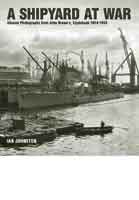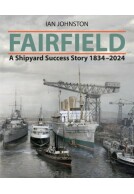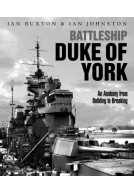Blowing Hot and Cold (Hardback)
Thermotank and the Story of Air Conditioning at Sea

Pages: 144
Illustrations: 80 colour illustrations, 100 mono illustrations
ISBN: 9781036107697
Published: 5th April 2024
(click here for international delivery rates)
Order within the next 31 minutes to get your order processed the next working day!
Need a currency converter? Check XE.com for live rates
Air-conditioning is one of those universal modern conveniences whose origins are entirely unknown to the general public. Online sources credit the first commercial system to the American Willis Carrier in 1902 – but this is not true. The first workable machine was patented four years earlier by Alexander Stewart, a Scottish marine engineer, who called his invention the Thermotank. It offered a massive improvement in comfort for passengers and was rapidly adopted by the shipping industry, eventually equipping many of the greatest liners of their day like Lusitania and Mauretania.
From these beginnings Alexander and his brothers William and Frederick Stewart built an immensely successful engineering firm with subsidiaries in America, Africa, Australia and Europe. Based on Clydeside, its fortunes were always closely linked to the shipbuilding industry, but with the slump at the end of the First World War the company was forced to look to other markets. At this point Alexander came up with a second world-beating invention, which he called the Punkah Louvre – the swivelling nozzle most familiar today as the source of ventilation in airliners. This made it easier to apply the Thermotank system to other forms of transport and even buildings, greatly expanding its sales potential.
Still largely a family concern, the business remained innovative and competitive until the 1960s, when the decline in British shipbuilding and the beginnings of globalisation led to amalgamation, restructuring and eventually the demise of the Thermotank name. In the process, most of the company records were dispersed or lost so this book is a particularly valuable testimony to a great British – specifically, Scottish – success story. Although almost unknown today, Thermotank was a business that changed the world.
"A worthwhile and readable book on an usual engineering subject."
Model Engineer - 18 October 2024
Article featured by
The Times/The Sunday Times
Article featured by
Glasgow Herald - Saturday July 20, 2024
"This a valuable marine engineering history which tells the story of invention, success, world wars (making munitions in WW1 and 400 miles of fan trunking in WW2), worldwide marketing, slump, change in fortunes and rescue."
IFSMA Newsletter - The Shipmaster's International Voice, Number 76 May 2024
About Ian Johnston
IAN JOHNSTON is a well-known authority on Clydeside shipbuilding and the historian of both John Brown’s and Beardmore’s. His training as a graphic designer is to be seen in the superb choice of photographs from the John Brown collection in Clydebank Battlecruisers and A Shipyard at War. This new book is a labour of love as Ian’s father worked for Thermotank, whose achievements he felt deserved wider public recognition.



















